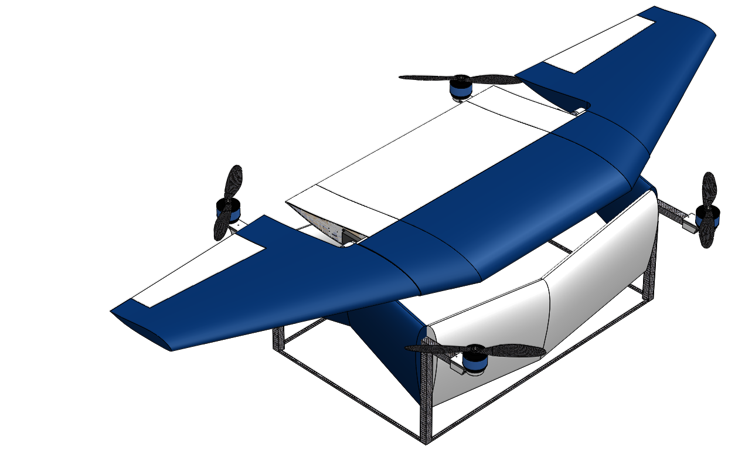
Aquatic environments globally face human-caused threats including pollution, invasive species, over-harvesting, diversion, drainage, and climate change. A scientific initiative lead by the Queen’s University (QU) Biology Department is proposed to develop an environmental DNA (eDNA) platform for high-quality and real-time data collection and analytics to monitor aquatic biodiversity and environmental ecosystem, with the goal of developing future freshwater resources management strategies.
A research collaboration project is established between the University of Toronto Institute for Aerospace Studies – Flight Systems and Control Laboratory and the Queen’s University, as well as other institutions and communities. The engineering objective is to provide a specialized enabling UAV technology to support scientific eDNA platform development. An innovative tilt-rotor aquatic unmanned aerial vehicle (aquaFly) is under design and development. The proposed configuration can land and take off from water surfaces and has a mechanism for automatic water sampling.
The focus of our research will be:
- long flight endurance and range performance to cover a large scope of water bodies;
- autonomous operation to reach inaccessible water bodies;
- safe vertical takeoff and landing on water surfaces;
- smooth transition control; and
- automatic sampling mechanism
Participants:
- Wayne Hsu (MASc)
- Yih Tang Yeo (MASc)
- Peter Yao (ESC)
- Igor Monteiro (MEng)
- Qingyang Liang (MEng)
Related Publications:
2021
Design of a Nonlinear Hierarchical Adaptive Controller for a Tilt-Rotor VTOL AquaUAV Inproceedings
In: AIAA SciTech Forum, pp. 1–10 (submitted), 2021.
2018
Transition Control of a Tilt-Rotor VTOL UAV Inproceedings
In: AIAA SciTech Forum, 2018.
2017
VTOL Design for Water Inspection Inproceedings
In: Unmanned Systems Canada, 2017.